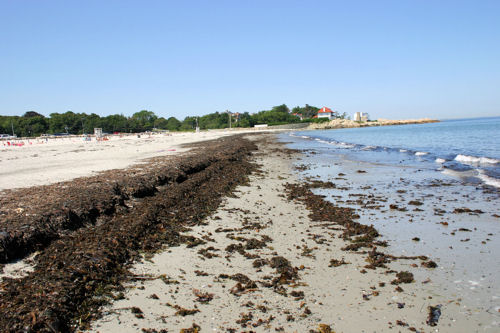
Two sections of each sand location page will be your responsibility. You need to e-mail an image of the location and an essay describing the location. Your image, along with a photo credit, will appear at the top of the page just under the banner.

C.F. Lindgren Photograph
Your Image(s) from the Location
Show the place! If it's a beach try to show the entire beach from the back area where the sand probably originates, to the water. Try to include what makes the area unique. If there are truly unique features, take a separate image. Try to include something for scale, such as a coin if the feature is small, or something easily recognizable if the feature is large. If it's not a beach, try to include as much of the feature as possible. Avoid showing people's faces. I probably won't use the image if anyone in it can be easily recognized.
I'll also "show the place!" I'll do it using an image taken from either the International Space Station, or the Space Shuttle using NASA's Gateway to Astronaut Photography website.
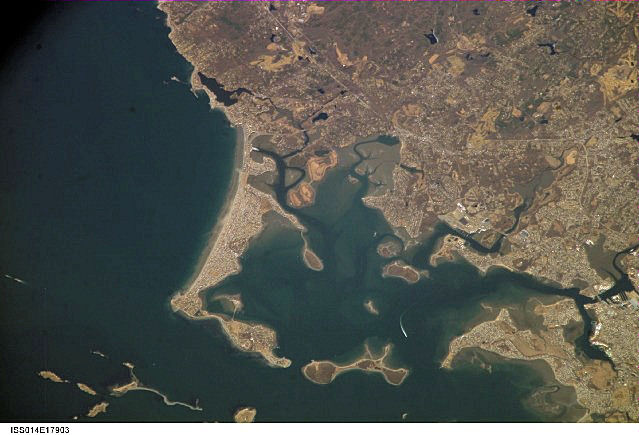
International Space Station 800mm Photograph
Image credit: Image Science and Analysis Laboratory, NASA Johnson Space Center (http://eol.jsc.nasa.gov)
Clicking on the link will take you to the Gateway to Astronaut Photography page for all of the metadata on the image.
| A General Description | Shape of the Grains | Sorting | Grain Identification |
Tell as much about the sample as you possibly can. Other students may be using your sample, and the more physical information you give them the better. Include in your essay as many of the following physical characteristics as possible.
What is the sample's overall color and/or shade?
Is the sample course or fine?
What is the most outstanding physical characteristic of your sample?
Look at the sample through a magnifier or microscope. Try to identify the average shape of the sand grains. The chart below will give you some ideas. Sand grain shape is based on two characteristics, its angularity, and how close it comes to being a sphere. Look at the chart below and try to match your average grains to one of the images. This is not an exact science, come as close as you can.
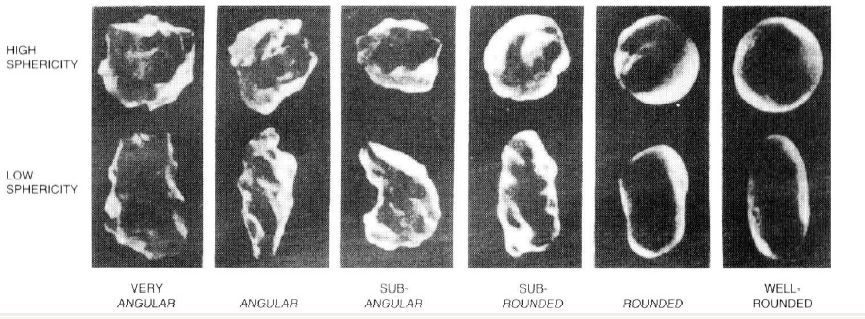
|
HIGH SPHERICITY |
||||||
|
LOW SPHERICITY |
||||||
|
VERY ANGULAR |
ANGULAR |
SUB-ANGULAR |
SUB-ROUNDED |
ROUNDED |
WELL-ROUNDED |
The thumbnails above show examples of the different shapes in the samples. This is far from perfect. In most cases the majority of the grains in the sample show that type of angularity. IF YOU FIND A BETTER EXAMPLE, DON'T HESITATE TO E-MAIL ME AND I'LL CHANGE IT!!
Sorting -
Are all the grains the same size? Geologists divide how well sand is sorted into three very general categories. Look at the table below and see which category best fits your sample. Note: Color has nothing to do with this, you are strictly looking at relative sizes!

|
WELL |
SORTED |
MODERATELY |
SORTED |
POORLY |
SORTED |
The thumbnails above show examples of the different degrees of sorting in the samples. This is far from perfect. IF YOU FIND A BETTER EXAMPLE, DON'T HESITATE TO E-MAIL ME AND I'LL CHANGE IT!!
Attempt to identify the minerals or materials that make up the sample. Sand is primarily made from three different types of materials:
Organic Material -
These particles are usually shells or shell fragments, but they can be anything that was once alive.
|
|
|
|
Rock Fragments -
Usually people think of sand grains as being individual minerals. In some cases the rocks that contain the minerals still exist - only much smaller!
|
|
|
|
Minerals -
The most common component of sand is mineral grains. Shown below are some of the most common. The link under the image will take you to a great visual database giving you all of the characteristics of the mineral. Clicking on the image will take you to the page describing the sand site. Note: Minerals in sand have been abraded to some degree, do not expect the crystal shape to be a perfect match with what is shown in the database!
|
|
||
|
Feldspar |
Zero Magnification Sand Image
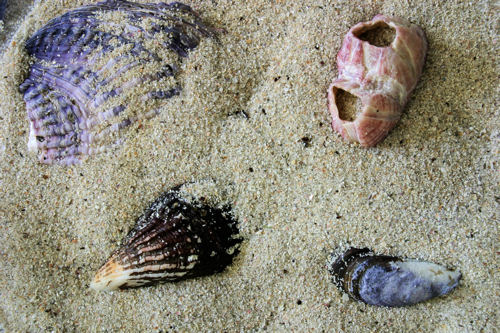
I'll place an unmagnified digital image of your sand on the page. This image will be of a Petri dish of the sample taken using a normal lens. It will represent what the sand looks like if you were holding it in your hand.
3X Sand Image
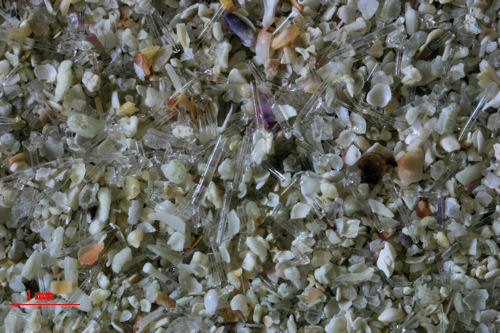
I'll also include a "3X" digital image of your sand. When I set the lens I use for these images, I calculated that 3X is actually equal to about 9X. In the image will be a red mm scale for comparison. The only time I will use another magnification is if the grains are too large for "3X."
Return to Home